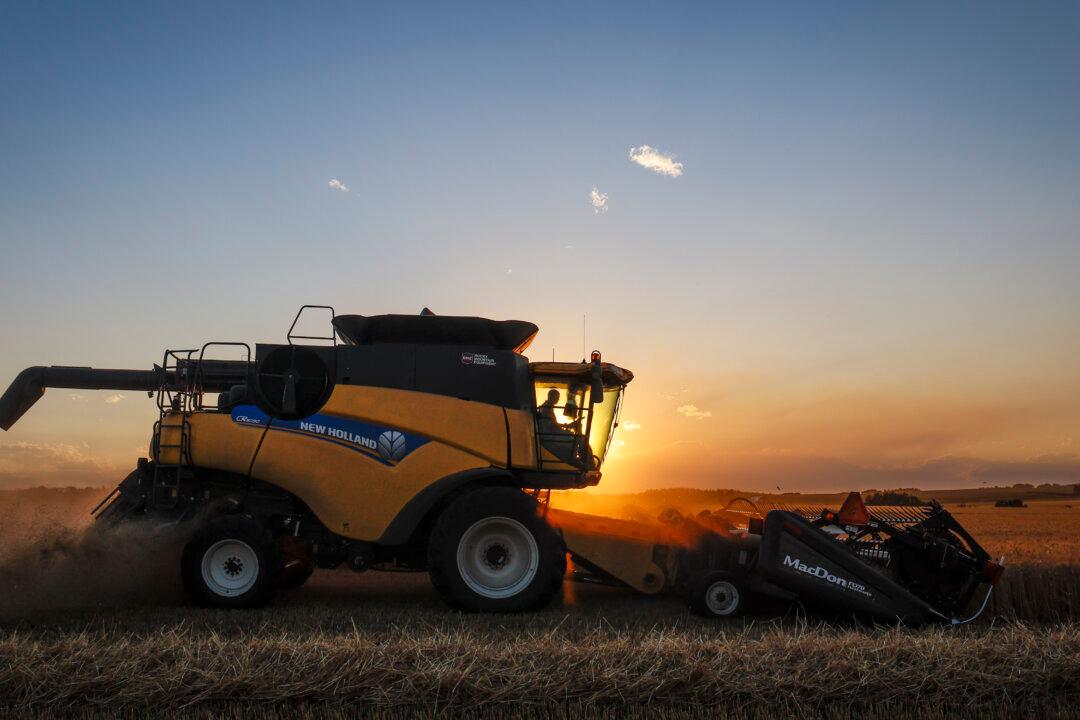The agriculture sector is preparing for Ottawa’s next policy framework with its increased focus on sustainability. More technological change is also filtering into the industry, but its implementation faces significant logistical and even cultural obstacles, and it relies heavily on government funding.
A top priority of agri-businesses is to take care of the environment, Taylor Brown, senior policy analyst, agri-business and national affairs, with the Canadian Federation of Independent Business (CFIB), told The Epoch Times.
“They’re stewards of the land. … They really care for their environment and protection.”
But now, over half of the firms surveyed by CFIB say their higher priority is to keep up with costs.
Rebecca Lee, executive director, Fruit & Vegetable Growers of Canada, told The Epoch Times that she is urging Ottawa to look at agricultural policy through the lens of food production, but added that farmers no longer represent a meaningful portion of the population and so don’t have the votes to effect policy changes.
“Any professional grower right now will tell you two things: having enough crop protection products in their toolbox and having the labour to produce. Those are the two top issues,” Lee said.
Her concerns are how Ottawa’s environmental objectives impact farming and how Canada will be able to balance food security with additional requirements on farmers.
Farmers eventually won’t grow those crops that they have to subsidize if retailers aren’t able to cover their production costs, Lee added.
Sustainability Priority
Ottawa is elevating sustainability as a key focus of agriculture. A considerable portion of its technology-related spending in 2022 went toward reducing emissions and sustainable agriculture.
The current Canadian Agricultural Partnership (CAP)—a $3 billion, five-year investment by federal and provincial governments that engages private sector venture capitalists—will be replaced by a new $3.5 billion Sustainable Canadian Agricultural Partnership (SCAP) starting April 1 and running for another five years.
Ottawa says agriculture represents about 10 percent of Canada’s greenhouse gas emissions, and Budget 2022 aims to triple the size of the Agricultural Clean Technology Program.
In addition, on Dec. 12, 2022, Ottawa launched consultations on a Sustainable Agriculture Strategy “to improve the sector’s environmental performance through a coordinated vision.”
Canadian Federation of Agriculture president Mary Robinson told RealAg Radio in an interview at the time that consulting with the feds is a great opportunity and she’s hopeful that “government will deliver something that makes sense for us.”
But in working with government on new initiatives, she is concerned about redundancy and already-stretched resources across the industry.
“I do have concerns about the balance between how government consults with industry and how industry has to shoulder the burden of that financially and from a resource perspective,” Robinson said.
In its submission to the feds regarding the SCAP, CFIB’s primary focus is reducing the total tax burden and red tape on businesses.
The CFIB highlighted efforts the agriculture sector has already shown in carbon sequestration, such as via minimum tillage, and the work that their farm members are already doing to protect the environment.
“There’s no avoiding new environmental initiatives. This government is clear that this is their priority. They’re not backing down from anything. We’re just trying to work with them to minimize the negative impacts on our farmers,” Brown said.
Lee says that given the minimal margins for fruit and vegetable growers, farmers will have to pick and choose how much they spend on contributing to research under SCAP, which is expected to be more than under the CAP program.
“If farmers are putting out money for this kind of research, they’re not putting money into investing in their own companies.”





